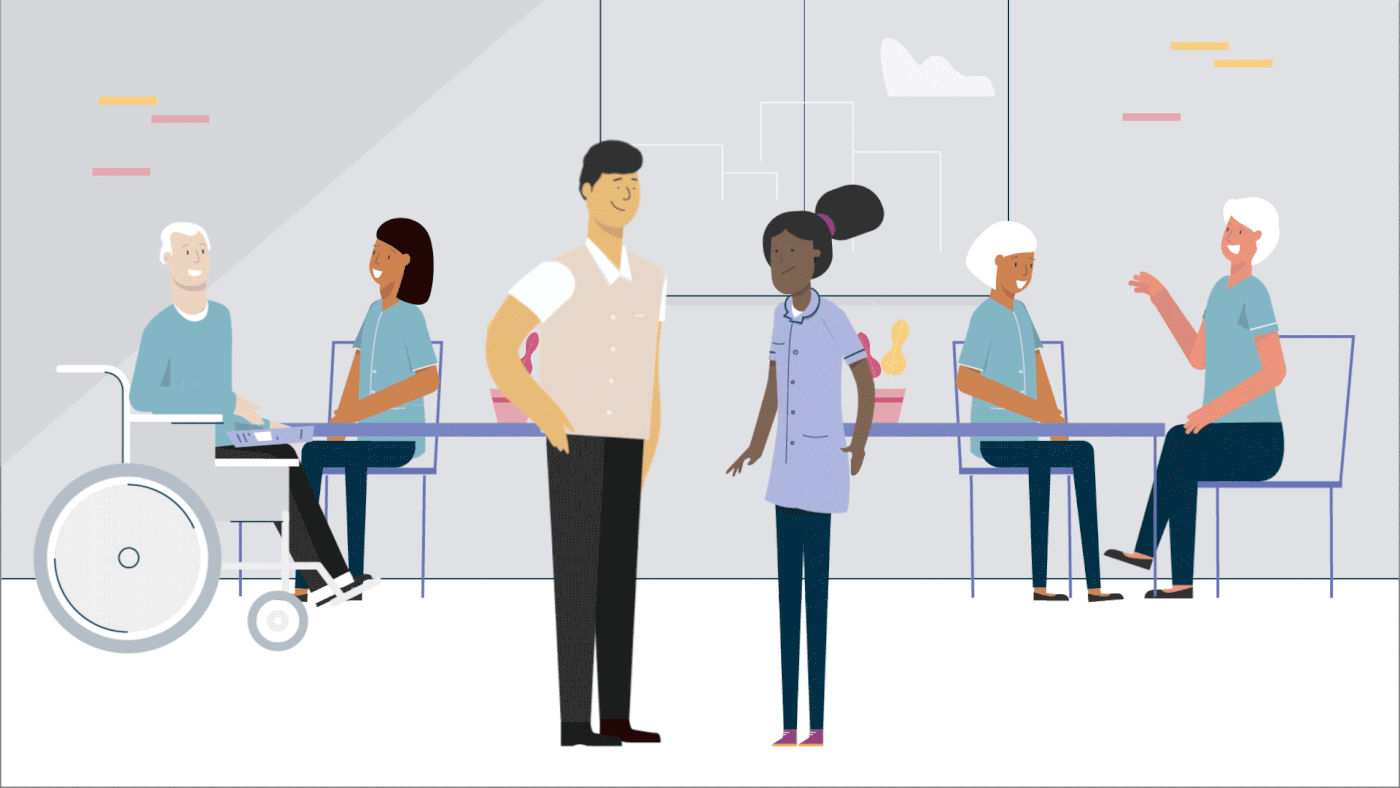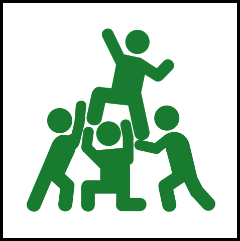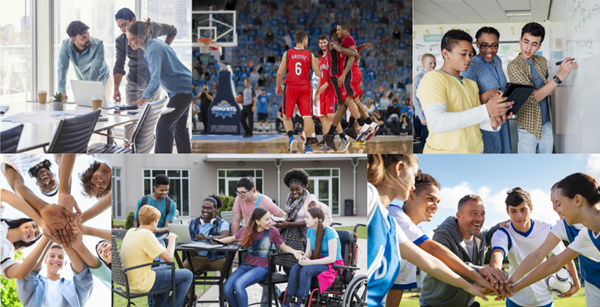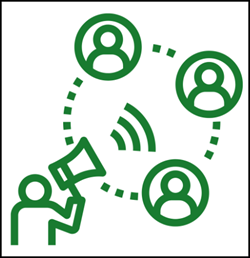
Professionalism

Teamwork and Leadership
Teamwork
 |
Teamwork, like the intricate dance of birds in flight, offers
a harmonious and synchronized way to achieve objectives. When individuals bring
their unique strengths and perspectives, they can accomplish what might be
impossible for one person alone. Let's delve into the myriad benefits of
teamwork.
 |
Benefits of Teamwork
1.
Diverse Skill Set: Teams are often composed of
individuals with varied expertise. This diversity can be leveraged to address
different facets of a problem or project.
2.
Increased Creativity: Multiple brains brainstorming
together can lead to many innovative ideas and solutions.
3.
Shared Workload: Tasks can be distributed based on
strengths and expertise, leading to faster, more efficient outcomes.
4.
Moral Support: Team members can motivate and
support each other during challenging times, fostering a positive work
environment.
5.
Enhanced Learning: Working in a team facilitates
knowledge sharing and provides opportunities for continuous learning.
 |
Modeling Effective Teamwork
To harness the power of teamwork, it's essential to model
specific characteristics:
·
Open Communication: Ensuring every member feels heard
and understood.
·
Trust and Reliability: Trusting team members and being someone they can rely on.
·
Active Listening: Giving attention to others' ideas
and feedback.
· Accountability: Owning responsibilities and acknowledging mistakes.
Roles and Functions Within a Team
1.
Leader: Guides the direction, sets
objectives, and ensures every member is aligned with the goal.
2.
Strategist: Thinks ahead, plans, and devises
strategies for team success.
3.
Implementer/Executor: Executing plans and ensuring tasks
are completed.
4.
Communicator: Facilitates effective communication
within the team and with external entities.
5. Mediator: Helps resolve conflict and ensures a harmonious team environment.
 |
Navigating Conflicts in Teamwork
Conflicts, while natural in teams, need careful handling:
·
Recognizing Conflicts: Being vigilant about potential
issues, whether they're arising from personal differences, workload
distribution, or other factors.
·
Open Discussion: Encouraging open dialogue where each
party can express their concerns.
·
Empathy: Putting oneself in another's shoes
can help understand their perspective better.
·
Seeking Mediation: Sometimes, an external party or team
mediator can offer an unbiased perspective to resolve conflicts.
·
Consensus-Building: After discussing the issue, the team
collaboratively decides on a solution everyone can support.
Teamwork, with its manifold benefits, is often the backbone
of successful projects and organizations. By understanding and embodying the
essence of effective teamwork, goals can be achieved more efficiently, and the
journey to these goals becomes a rewarding experience of growth, learning, and
collaboration.
Leadership is more than a title or position; it's about
influence, direction, and inspiration. An effective leader possesses a combination
of attributes and attitudes that make them stand out:
1.
Vision: Clearly understanding where they
want to lead their team.
2.
Integrity: Honesty and consistency in actions
and decisions.
3.
Empathy: Understanding and relating to team
members' feelings and needs.
4.
Resilience: Facing challenges head-on and
finding ways to bounce back.
5.
Adaptability: Adjusting to changes and making
timely decisions based on new circumstances.
 |
Common Types of Leaders
1.
Transformational Leaders inspire and motivate team members by
setting a vision and encouraging innovation.
2.
Transactional Leaders motivate team members by focusing on
tasks, processes, and rewards.
3.
Servant Leaders: Prioritize the needs of their team,
promoting personal and professional growth.
4.
Autocratic Leaders: Make decisions with little input
from others.
5.
Laissez-Faire Leaders: Offer much freedom to team members,
trusting them to make the right decisions.
 |
Leadership Techniques for an Effective Team
1.
Setting Goals: Clearly define what needs to be
achieved. Goals should be specific, measurable, attainable, relevant, and
time-bound (SMART).
2.
Selecting Team Members: Choose individuals based on their
skills, expertise, and the value they bring to the project. Diversity in a team
can often lead to richer ideas and solutions.
3. Assigning Roles: Allocate tasks based on strengths and skills. Ensure each member understands their role and responsibility.
Modeling Leadership Decisions and Communication
1.
Decision Making: Gather relevant information,
consider team inputs, and weigh the pros and cons before deciding. Leaders
should also be ready to take responsibility for their decisions.
2.
Open Communication: Maintain transparency by informing
team members about successes and setbacks. Encourage feedback and open
dialogue.
3.
Active Listening: Listen to team members' inputs,
concerns, and feedback. This not only builds trust but can also provide
valuable insights.
4.
Feedback Mechanism: Constructive criticism helps team
members grow. Praise for a job well done boosts morale.
 |
Leadership is a journey of continuous learning, adaptation,
and growth. By understanding the attributes of an effective leader and
implementing robust leadership techniques, you can guide your team to success,
ensure productive collaboration, and foster an environment of mutual respect
and innovation. Embrace the challenge, for leadership, is not just about
leading others but also about personal evolution.
Interactive Tasks
Please proceed with the following steps in your Work Readiness Skills learning module:
1. Log in to the Work Readiness Skills module.
2. Once logged in, click the 'view lesson'
icon.

3. Watch the Interactive Video
provided.
4. Go through and read the Lesson
Transcripts.
5. Complete all the Unit Questions and
ensure you submit them.
If you have any questions or clarifications, contact your
teacher.